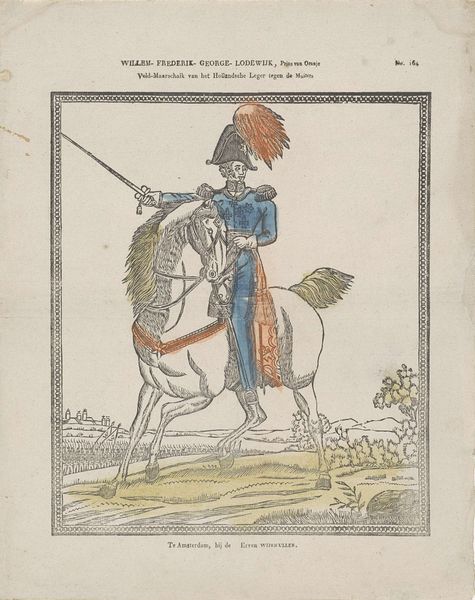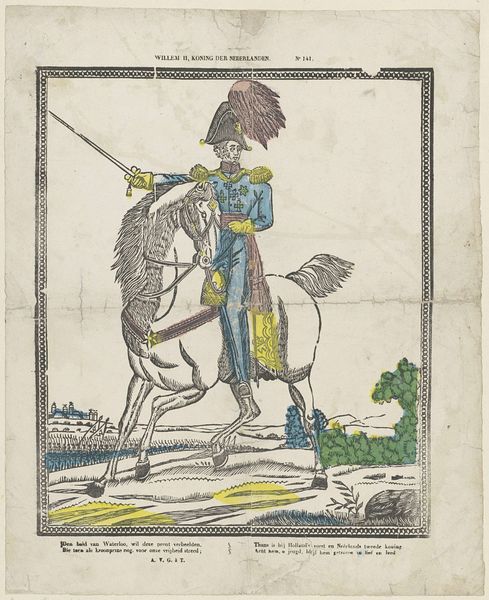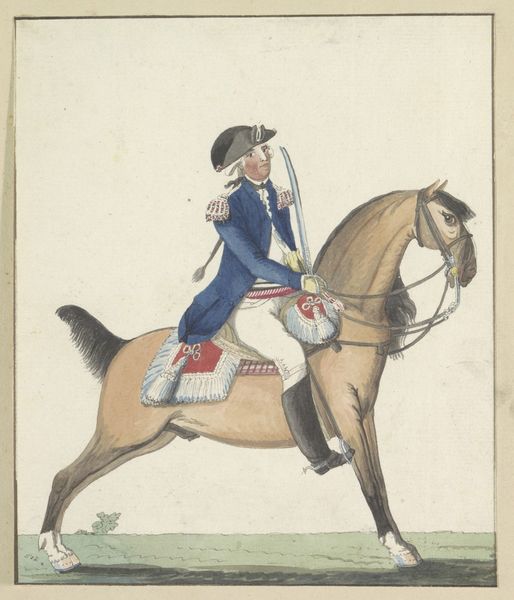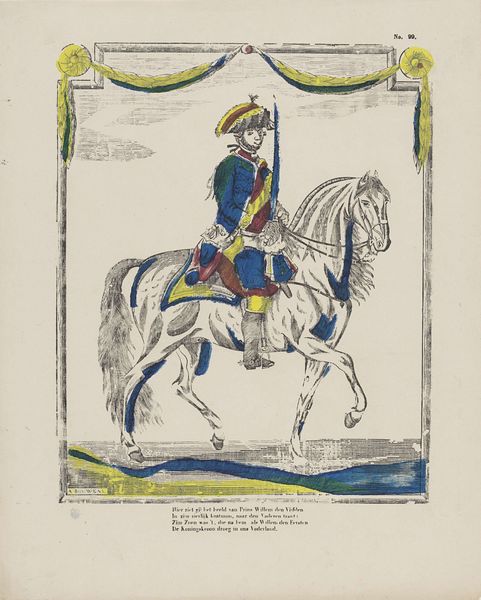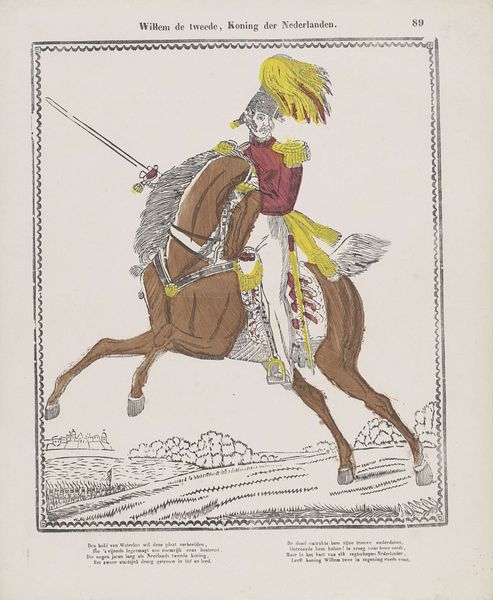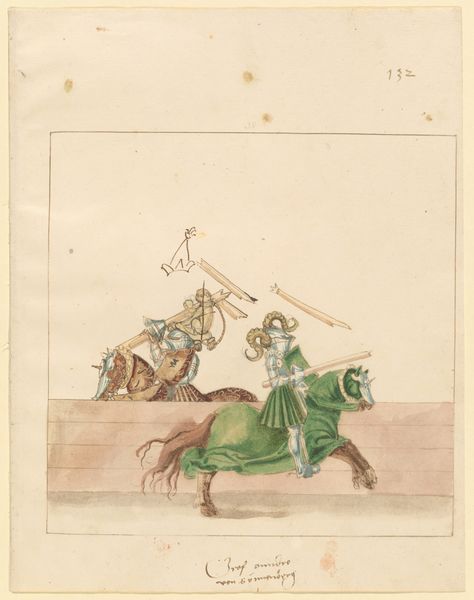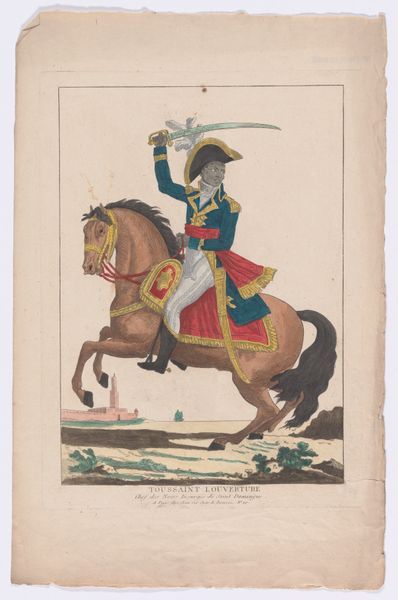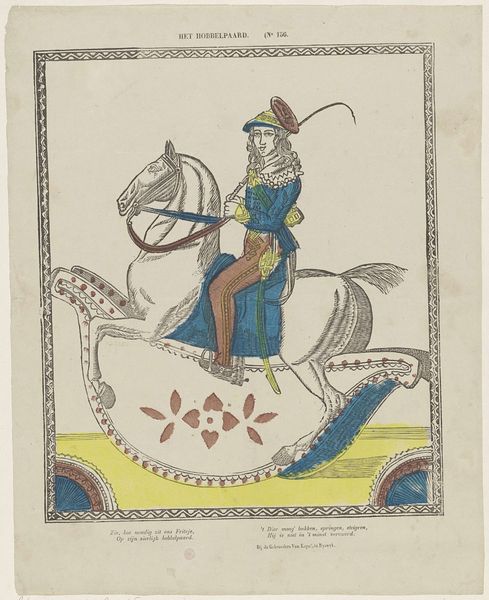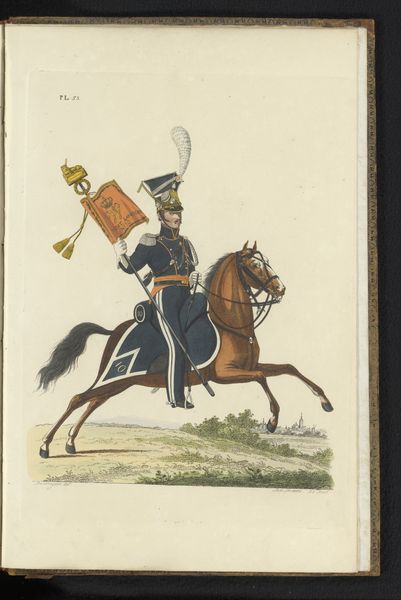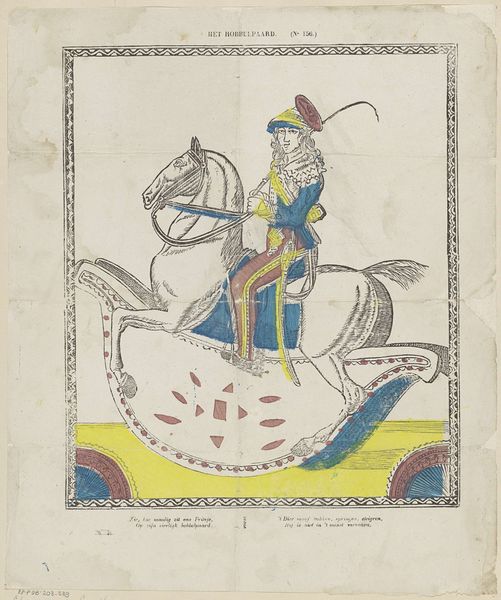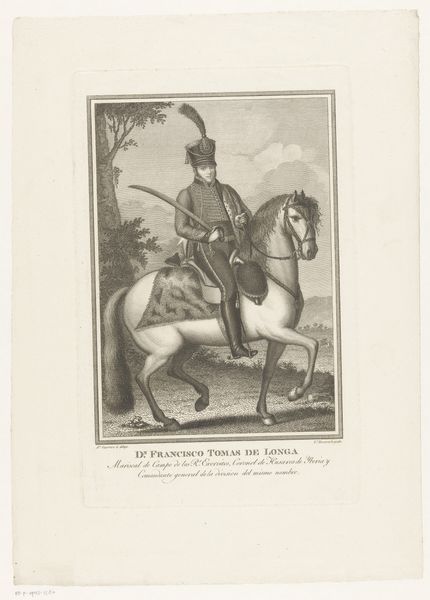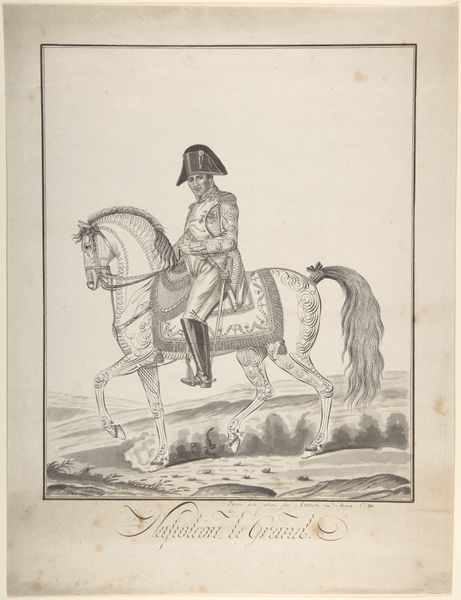
Dimensions: height 415 mm, width 329 mm
Copyright: Rijks Museum: Open Domain
Curator: We’re standing before “Willem II, koning der Nederlanden,” a print, drawing and watercolor piece created sometime between 1848 and 1881 by the workshop of Lutkie & Cranenburg. Editor: It’s fascinating. At first glance, there’s a rather whimsical quality to the lines, despite depicting a king on horseback with his sword drawn. It feels like a storybook illustration. Curator: The romantic, stylized form certainly contributes. As do the visual cues. It draws from established equestrian portraiture—but the symbolism of kingship, nationhood, and military prowess is softened. This heroic representation speaks to a longing for strong leadership, for a kind of idealized, paternal protector of the Dutch people. The poems written below reinforces it. Editor: That soft watercolor palette – earthy browns and that almost powdery blue – plays a part in the feeling it evokes. There's a sense of nostalgia. Also, I see what you mean about the formal portrait. The artist places Willem II above the viewer, a traditional technique that reinforces the power dynamic and reinforces hierarchy, a compositional echo of those older traditions. The horse, with its animated pose, could be a symbol of power and motion, right? But here, the line work appears less idealized; it's like the artist struggles to make them merge perfectly in the same image. Curator: Precisely! Consider the plumed helmet, the ornate bridle, even the hint of a castle on the horizon – each contributes to a specific reading of Dutch history and collective identity. This is not just a portrait, it's a careful construction of a cultural icon. There is that slightly awkward sense, too; I get the sense the artists is working in an old tradition without the tools or capacity to follow the expected format completely. Editor: The very medium of watercolor and print contributes, doesn't it? A somewhat accessible medium for depicting royalty, therefore extending that sense of nationhood into the broader populous through prints and drawings that could circulate among people. The lines are clear and the colors vivid for a work of this age; and perhaps it’s the layering that lends to that texture of history, that whisper of collective memory that emanates from the image. Curator: Absolutely. By combining historical tropes with accessible artistic methods, the piece offers a potent symbol, one that bridges traditional authority with emergent notions of national identity. Editor: It’s as if form and symbolism combine in an intimate dance. The image is able to echo throughout the years. I will carry that with me!
Comments
No comments
Be the first to comment and join the conversation on the ultimate creative platform.
